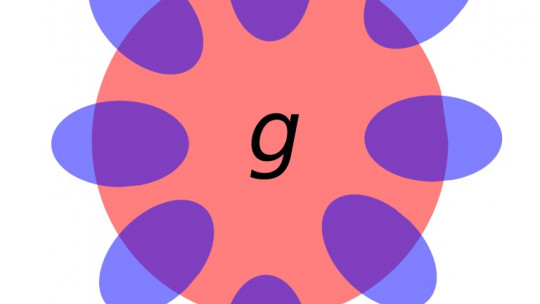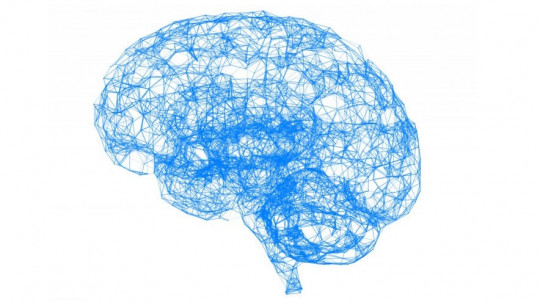The study of intelligence is one of the topics that attracts the most interest, and it is easy to assume the reasons why this is so. On the one hand, the ability to adapt to varied situations It is something that is highly considered in an increasingly demanding labor market that always seeks maximum productivity from the worker.
On the other hand, at a much more subjective level, intelligence has become a defining question of one’s own identity and that affects self-image and self-esteem. Now, intelligence may seem like a concept that is too abstract and general to be grasped by science. How is this problem faced from the psychometry?
The two factors of intelligence
In the study of intelligence there are different paradigms, such as fluid intelligence and crystallized intelligence. However, it is the Two-Factor Theory of the English psychologist Charles Spearman (1863 – 1945) which has perhaps had the most notoriety historically.
Spearman observed that the scores that school-age children obtained in each of the subjects showed a direct relationship, so that a student who gets very good grades in one subject will also tend to score well in the rest of the subjects. From this fact, he devised an explanatory model of intelligence suitable to be a starting point for measuring intelligence. I.Q (IC ). This explanatory model is called Two-Factor Theory of Intelligence
According to this theory, intelligence, which is the theoretical construct that is measured by tests in the form of IQ, has two factors:
G factor
A general factor of intelligence the call G factorwhich is the essential foundation of intelligent behavior in any situation, no matter how particular it may be.
S-factors
A series of specific factors, which can be understood as skills and aptitudes that are present only in certain areas of life and whose results cannot be generalized to other domains.
A good example to explain the Two-Factor Theory can be found in the case of Brain Training video games. These video games seem to be designed to improve our G Factor through play. That is, a few hours of play a week should produce greater intelligence in any situation in the person who plays them. However, it seems that they only act on the S Factors: one sees an increase in one’s ability when playing, but this improvement does not generalize to other areas, It is a specific learning whose results do not go beyond the video game itself
From the abstract to the concrete data
We can agree with Spearman that If something characterizes intelligence, it is its abstract nature In the study of intelligence, there is the paradox of trying to explain something that is defined by changing all the time in its adaptation to the different problems we experience: our ability to successfully solve the infinitely varied series of problems with scarce resources (including , time). In this sense, it seems necessary to account for something similar to the G factor.
Now, by including an abstract dan concept such as the general factor of intelligence, this theoretical model becomes impractical if it is not based on concrete data, on what we find empirically through IQ measurements. Therefore, in addition to coining the term G factor, Spearman simultaneously devised a strategy to empirically arrive at specific values that defined it. In this way, when operationalize concepts to build intelligence measurement tools (the IQ test), the G factor It is defined as the representation of the variance common to all cognitive tasks that are measured by the test. This internal structure of the relationships between the data is found through the use of factor analysis.
Speraman believed that intelligence consisted of knowing how to perform a series of tasks and that the most intelligent people knew how to do all tasks well. The different tasks that he proposed in the IQ test could be organized into three groups (visual, numerical and verbal), but all of them were correlated. This last factor, resulting from the study of these correlations, would be the significant one.
Therefore, the G Factor that is reflected by the tests is actually a quantifiable measure that can only be found by statistical operations from the raw data collected in each of the test tasks. As opposed to the calls observable variableshe G factor Spearman shows us a matrix of correlations between variables that can only be found using the statistical technique. That is, it makes visible the structure of relationships between various variables to create a general value that was hidden, the value of the G factor.
The G Factor, today
Nowadays Each intelligence test can be based on different theoretical frameworks and conceptions of intelligence, precisely because of the abstractness of this last concept. However, it is common for these measurement tools to include scores on specific areas of competence (language, spatial intelligence, etc.) at various levels of abstraction, and to also offer a G Factor as a value that summarizes the general intelligence of the individual. Many modalities of intelligence measurement can be considered to be direct descendants of Spearman’s theory.
IQ tests aim to measure intelligence psychometrically based on genetic variables or “g”. This is an indicator that is usually used in academic environments or to detect possible developmental disorders (such as maturational delays) and is also used to establish correlation relationships between the environment and the genetic components of intelligence: he G factor has been correlated with life expectancy, the possibility of finding work and other relevant constructs
Criticism and discussion
There are basically two criticisms that can be made. The first is that the general intelligence factor seems to be affected by the cultural bias: Economic position, educational level, and geographic housing distribution appear to affect intelligence outcomes, and this is an issue that cannot be explained by genetic variation alone. The second is that, as practical as it may be, the G Factor is insensitive to the different forms of manifestation of intelligence the particularities that make each person develop intelligent behavior in their own way (something that has attempted to be corrected through Howard Gardner’s model of multiple intelligences, for example).
Be that as it may, it is clear that the G Factor is a very interesting concept for research in psychology and social sciences.









